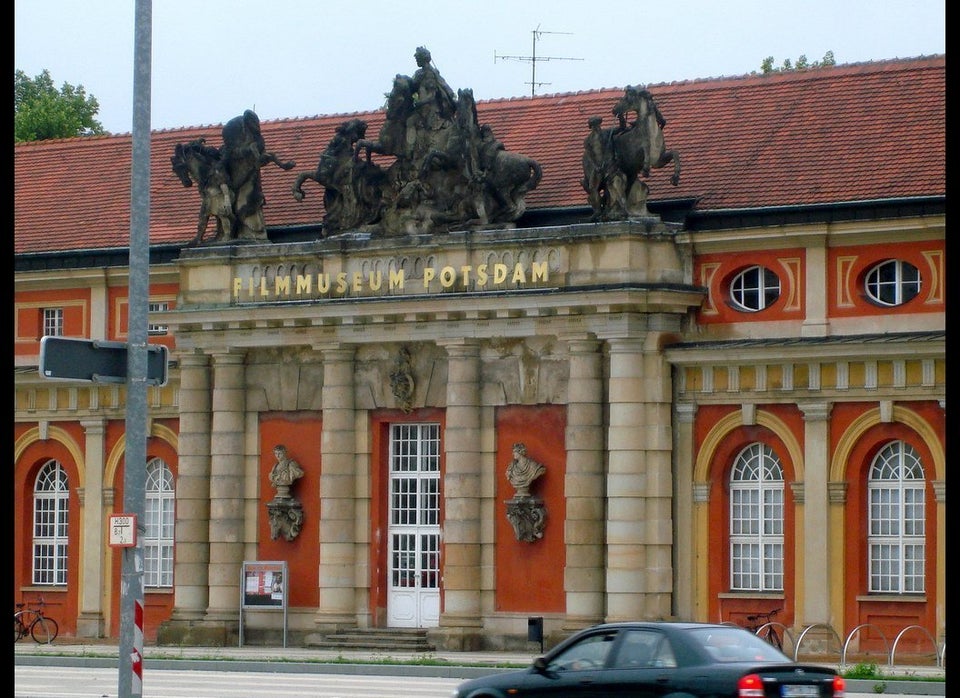On a cool, misty Fourth of July my daughter and I took the train from Braunschweig to Potsdam to meet Kevin Kennedy our guide for a four-hour bike ride through the city. Although I was yearning for a picnic with hotdogs and burgers, we settled for a break from typical German fare of meat and potatoes prepared every way possible, by eating at an Asian café in the train station.
We were to meet Kevin Kennedy at a bike rental shop by the station. He's a local guide and a cultural historian -- a student of Prussian history -- which was apropos for our ride through Potsdam's parks. We were riding bikes because Potsdam's green spaces sprawl through the city center and two wheels allowed us to cover some territory and talk at the same time.
Kennedy was late so we practiced riding our big heavy metal frame bikes with foot brakes in circles around the parking lot. Because of his name, I expected Kennedy to be an Irishman or at least from Boston but he turned out to be a ruddy-faced ginger-haired man with a GI father from New Hampshire and a mother from Berlin.
After World War II most of Potsdam ended up behind the wall in East Germany, even though it is south and west of Berlin. Most of the churches were destroyed by the communists along with many of the old buildings. The city is now trying to reproduce some of these buildings to recreate some of the historic skyline.
We began riding through Babelsburg park with its widely spaced mature trees and meadows. Potsdam's parks were not perfectly manicured like others we had seen in Germany, which, in a way, was a relief. From the path we could gaze across meadows and through forested landscapes and see Gothic-style palaces built by the Prussians. Across the Teifer See -- a large lake - was expensive waterfront development. We passed the little iron footbridge where Otto von Bismark assumed power - its green-painted iron railings resembling tree branches. Keeping half an eye out for birds, I saw a cormorant drying its wings in the sun, heard the rapid tapping of a woodpecker, and saw a gray heron as still as a statue. A hawk was on the ground eating something in the grass -- maybe a squirrel -- under a huge tree.
History was everywhere we looked. We rode past tiny bits and pieces of the Berlin Wall; across the Glienicker Brucke (Glienicke bridge) where spies were exchanged during the Cold War; past schlos Cecilienhoff, site of the Potsdam Conference where Stalin, Churchill, and Truman figured out Germany's post-war fate and Truman made the decision to drop the bomb; and past Sans Soucci, Frederick the Great's photogenic and opulent wine house.
After a pint of beer at a beer garden in the park, we took to the streets of the city -- which was just a little terrifying -- on our way back to the train station. For a few minutes we parked across from the Film Museum and enjoyed the cool weather and watched as cranes and bulldozers swayed and groaned on a construction site around a big green-domed church.
Cultural historian Kevin Kennedy's favorite spots in former East Germany:
1) Gorlitz, a large city on the southeastern tip of former East Germany right on the border with Poland, survived WWII with no damage. Because there were no armaments or military presence there, this Renaissance city with its 15th and 16th century architecture was spared.
2) Weimar is the other Germany "with great literary and philosophic traditions." It also survived the war in great shape.
3) Located on the Baltic Sea, Rostock has long tradition of ship-building and fishing. This city was heavily damaged but has been nicely renovated. There's some interesting architecture there, as well as sugar sand beaches.
4) "Everyone has the idea that Dresden was destroyed in the war," says Kennedy. Half the city survived the bombing and today a lively arts scene thrives in the city. Also, picturesque Meissen is just down the road.
